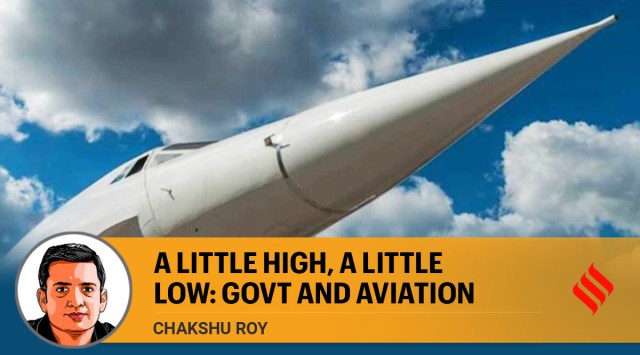
In the 1960s, England and France started collaborating on a passenger aeroplane that would fly faster than the speed of sound. The aircraft was called the Concorde. It was an engineering marvel, and flying at Mach 2 (twice the speed of sound), would transport passengers between London and New York in three-and-a-half hours. The aircraft’s iconic design of a thin fuselage, swept-back wings, and a nose that would drop down became synonymous with supersonic travel. In 1964, the Government of India would inform Parliament that Air India had paid $500,000 for securing the delivery positions on two Concordes.
Around the world, civil aviation has seen the active involvement of legislatures. India has been no different. In 1911, the legislative council decided to regulate the manufacture, sale, and use of aeroplanes when there was hardly any aviation activity. Explaining the timing of the law, a government member said, “Those who have watched the astonishing progress made during the last few years towards the conquest of air would be slow to set any limits to possible future developments… it is quite within the bounds of possibility that within the next few years the more adventurous Members of this Council may be winging their way to Simla in aeroplanes instead of corkscrew railway.”
The growth of civil aviation would take time in India. Till 1922 there were less than 20 aircraft registered in the country. Things changed slowly, and in the 1930s, two private players, the aviation arm of Tata Sons and Indian National Airlines, started their operations. Both of them got paid by the government for carrying mail. With an increase in flying activity, the central legislative assembly enacted the Aircraft Act 1934 to regulate the technical aspects of civil aviation. But starting an airline did not require any licence from the government. By the end of the 1930s, another airline joined the fray and operated regional services from Bombay.
The onset of the Second World War added to the growth of aviation in the country. First, the war resulted in the construction of airstrips, adding to the flying infrastructure. The availability of surplus aeroplanes at the end of the war encouraged multiple entrepreneurs to start airline operations. After the war, the legislature made air transport services a licensed activity. By the end of the decade in 1950, airlines in India had flown five lakh passengers, covering 18 crore miles over 12 lakh hours.
Post-Independence Parliament nationalised the nine private airlines in the country into two entities. The Air Corporations Act of 1953 created Indian Airlines and Air India International — the former for domestic operations and the latter for international routes. J R D Tata was appointed the Chairman of Air India International. Mr Tata was an accomplished aviator and, in 1932, had piloted the Tata Sons mail service from Bombay to Karachi. This aviation arm of the company was later spun off into a separate airline and then nationalised.
Mr Tata was keen on supersonic air travel. While in New York in 1960 (on Air India’s first flight to the city), he was quoted by the media as strongly favouring the development of a supersonic airliner. By 1962 Air India had become the first all-jet airline in the world. Two years later, it would ensure its technological superiority by reserving delivery positions on the Anglo-French Concorde and the American supersonic aircraft, one of the few airlines globally to do so.
The Concorde would come to India on demonstration flights and as part of private touring charters but never on a regularly scheduled commercial flight. But Parliament’s interest in civil aviation and Air India would continue. Members would regularly raise issues on the airline’s financial condition and the working condition of its personnel. And in the coming Winter Session, they will focus on its disinvestment.